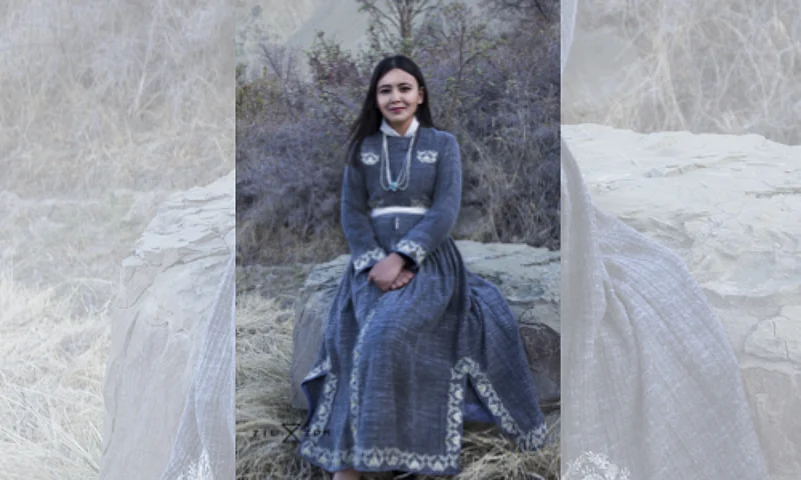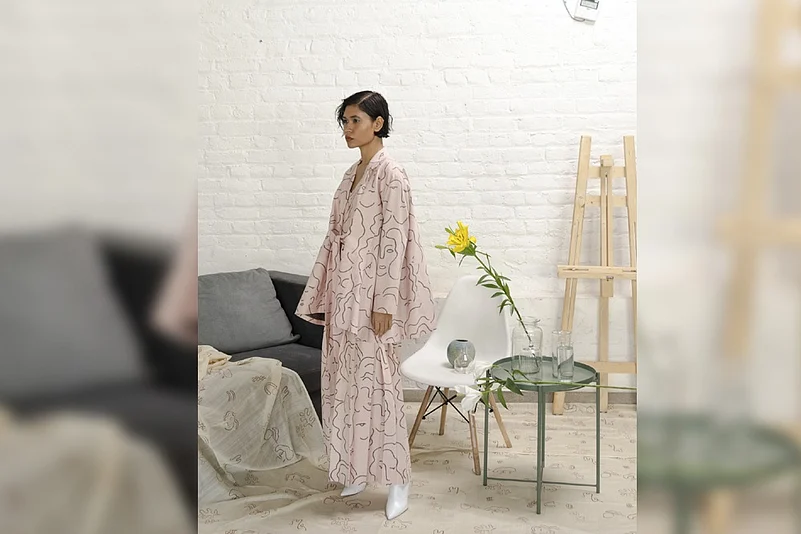Lakmé Fashion Week announced the 28th batch of Gen Next designers. The six selected designers will be presenting their creations at the upcoming Winter/Festive ’19 edition. For this year’s edition, six names have been carefully chosen from a pool of 400 designers to make their debuts at the upcoming Lakmé Fashion Week winter/festive 2019. They are Sahib Bhatia, Ankita Srivastava, Stelzin pelmo, Gaurav, Akansha Agarwal and Manjushree Saika. Being selected for the Gen Next Designer program is like a dream come true for all aspiring designers. The designers chats up about their latest collection and stress on the importance of recycle of fashion, revival of weaves, sustainability and queer fashion.
Amaaré by Sahib Bhatia
For Sahib Bhatia it is like an organised chaos. Says Bhatia, “We have little time before fashion week starts and there’s a lot of work and effort that needs to be put in terms of our designs and collection. That said, I am really looking forward to presenting this season at Lakmé Fashion Week”
He feel the biggest change in fashion is because of the social media boom as people have become more aware and conscious about international fashion trends. Talking about the latest trends in fashion, he says that oversized clothing, chunky sneakers, sling bags and bum bags for men, fluorescent colours, utility wear inspired clothes, wrap around single breasted jackets are in trend now.
Emphasizing on queer fashion, he feels it is a strong statement and is helping people celebrate their own being without being judged by the society. As a brand, they are conscious and considerate towards the environment. “All our packaging is paper based, one hundred percent recyclable and in the future, as we grow, we would want to use more and more organically produced fabrics.”

Zilzom by Stanzin Palmo
Stanzin Palmo shares that in the last five years there has been a drastic change in the Indian fashion landscape. Over the years, consumers have become experimental with their choices and have also become more conscious of “who made my clothes” and what impact it has created on the environment. Buyer sensibilities are changing, and they understand the importance of investing in good statement pieces that will become a classic in their wardrobes.
Talking about his preparation for the Lakmé Fashion Week Palmo says, “We have been fortunate enough to be mentored by Sabina Chopra at the Gen Next master class and I feel lucky to be a part of the Gen Next batch of 2019.” Palmo is reviving the weaves through Pashmina of Ladakh, a hidden gem that has been tucked away in the hills of Ladakh.
Ladakh Pashmina shawl spun and woven on the shuttle loom by expert artisans, thus creating a beautiful handmade shawl. She says, “I have translated my inspiration on the Pashmina shawl with a combination of hand embroidery which sets it apart from the rest. I want Ladakh to be recognized by its Pashmina, which is the finest in the world. I believe creating awareness is a way of reviving the textile, as people don't even know of its existence.”

Ura Maku by Manjushree Saikia
Talking about his debut at the Lakmé Fashion Week says, “I am constantly on the go added with constant pressure to get my designs perfected before my showcase at LFW. She feels that the Indian fashion scene is much more responsible towards Indian textiles and crafts. The Indian mindset nowadays, is much more aware and progressive because of fashion magazines, blogs and social media. Despite the awareness, I still feel that the conscious fashion market is still very niche.Trends come and fade, what remains is classic. “I believe everyone should understand their own personal style. That’s what makes a person effortlessly stylish,” adds Saikia.
She states that Indian fashion has started with and is very much synonymous to Khadi (handspun and handwoven). “I believe in reviving the art-form and give artisans their due for their contribution to the Indian economy. My collection that will be presented at LFW involves handwoven Eri, Mulberry Silk from Assam and Chanderi tissue combined into timeless tailored silhouettes,” adds Saikia.

Anatomy by Gaurav
Gaurav Singh’s winning collection drew inspiration from ‘Kadali-Patram’. “It’s the Sanskrit name of a banana leaf that is considered sacred. In a world swayed by modernity and minimalism, it’s hard to find fashion that stays true to its roots. There is no argument about the richness of Indian heritage and its craftsmanship. From Khadi to Chikankari, various parts of India have quintessential cultural identities that pride themselves with artisanship passed on through generations. The environmental hazards of fast fashion are no new news. The concept of slow fashion promotes handloom revival. Once the consumer knows that they need to consume less, they will buy something of quality, which is made skillfully with added cultural value. Gaurav says, “I think handloom revival will also raise awareness of fair trade, as artisans also become more aware of their own skill and talent. For my upcoming collection, I am using Khadi fabric in a different form.”
For Gaurav, fashion is a creative form of self-expression. One shouldn’t be categorized into two genders. It is all about expressing yourself in your own way. Says Gaurav, “My thought on queer fashion is all about a freedom to genderless fashion, where it shouldn’t be seen as a different concept in society. We should remember “Shikhandi”, a great queer character in Indian mythology. Moreover, I want to give a special thanks to the honorable Supreme Court for its landmark judgement and freedom to genderless fashion.”

Noié Noéi by Akanksha Aggarwal
Akansha Aggarwal is now working on developing new fabrications and exploring new techniques for the show. “I look forward to contributing in a dreamy, magical yet bold-spirited runway,” says Aggarwal. She feels in the last five years, fashion has tremendously changed in India as there is significant change in consumer behavior - the western influence and high street culture are highly evident. Even with the rise in social media, fashion is taken more seriously and followers are able to identify their own unique style. Designers too, are experimenting beyond horizons which the Indian society is gradually accepting.
For the Lakme fashion Week, she has scripted a short story of ‘Noie’, a young girl who breaks into a cloudy sphere of dreams and fables. She will be using a lot of jute and linen in her collection.

Ankita Srivastava, Little Things Studio
“I don’t think I will be sleeping for the next two months. Since the announcement I’ve been constantly on my toes trying to do justice to this huge platform,” says Srivastava. Henri Matisse being the inspiration of the upcoming collection, she is abiding by one of his famous quotes “Don’t wait for inspiration, it comes while working” So she has started working by transforming designs constantly to get to the soul of the collection.
Srivastava feels that the need of the hour is to be mindful of what fabric is being used. India as a country has a lot of textile treasure where these handloom fabrics are much skin and environment friendly. Since everyone is moving towards khadi and organics to be eco-friendly. She says, “We as a brand started with an eco-friendly vision in mind. We have been working with handloom Chanderi and handloom Khadi since the beginning. We are continuously trying to explore more and more such fabrics and have introduced Cupro in the upcoming collection.”
















